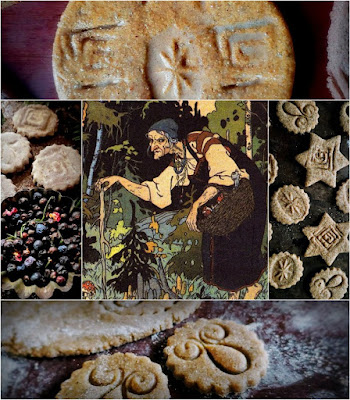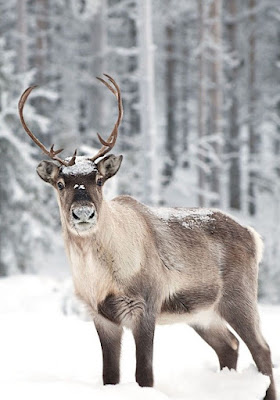How People Celebrate Easter Around the World
Easter is a very special time of year in many different cultures. Most of us associate eggs,
bunnies and chicks with this particular celebration but there is so much more to it, and it's all tied up with culture and language.
Check out our favourite fascinating facts and interesting Easter rituals and customs from different countries around the globe.
AWW...EASTER BUNNIES, LAMBS, EGGS & CHICKS
- All around the world, bunnies, eggs, chicks and lambs are very strongly associated with Easter due to their symbolic meaning – they stand for fertility, rebirth and new life. Most animals give birth in Spring – just around Easter time.
- Eggs were already used by the ancient Persians and Egyptians to celebrate the Spring Equinox and the beginning of the New Year. They were traditionally coloured and eaten during the festivities.
- In Europe, coloured eggs are used to decorate houses, trees and bushes in gardens and front yards.
- In Hungary and Romania, wooden eggs are painted with motifs of the Christian Easter Story.
- In Russia, the former Royal rulers Czar Alexander III and Czar Nicholas II had some very special Easter Eggs made for them by the jeweller Carl Fabergé at the beginning of the 20th century.
- In some countries Easter Egg Hunts are very popular during the Easter season. The custom is for the "Easter Bunny" hides eggs around the houses and gardens, and then children set off on a treasure hunt to discover them. This tradition is common in the US, Austria, Germany, Sweden, Switzerland, Canada, Malaysia, Australia, Brazil, India, and the Philippines, where parents and grandparents hide bright Easter eggs and sweets – usually outside the house – for their children to seek out.
- The Easter Bonnet Parade is a tradition shared by Australia, the UK and the US. A bonnet is an old-fasioned word for a hat! Children go around kindergartens, schools and up and down the streets wearing hats with bunny ears, Easter eggs and chocolate.
- Egg-Rolling races are held all over the world on Easter Monday. Eggs are rolled down a hill or slope and the first one to reach the bottom unbroken is the winner egg!
- There is also an Egg-Knocking game played in many countries including France, Germany, Norway and Syria where people use hard-boiled eggs. The main purpose of this game is to hit everyone else’s egg and keep your own egg undamaged. The last person holding a whole egg wins the game.
FASCINATING FESTIVITIES IN SPECIFIC COUNTRIES
Egypt
Egypt
- The Christian community celebrates Easter Sunday by visiting friends and family and gathering for a special Easter Dinner, held in the afternoon.
- Easter Monday is a public holiday in Egypt due to an Ancient Spring Festival which is celebrated on this day. People usually spend the day outside in public parks or private gardens exchanging colored eggs, eating together and enjoying themselves in the Spring sun.
Australia
- In Sydney, there is a Royal Easter Show with fresh and delicious agricultural products from around the country, an exhibition of different farm animals, a bright parade, fireworks, food, and lots of fun.
- For Australians, Easter marks the end of summer – not the beginning of Spring, like it does in so many other cultures.
- Australians prefer the Bilby -which is native to Australia – as the symbol for Easter.Not quite a rat or possum, the short and plump little critter is a marsupial found in the Australian bush and outback. Rabbits are perceived as vermin for destroying crops, vegetation and burrows of other important animal species.
Greece
- Eggs date back to the Roman Empire, when people painted eggs in bright colors as a symbol for the sunlight of spring. They used them in egg-rolling contests or gave away as presents. Eggs represented fertility and were considered good luck.
- On Easter Sunday, there are public outdoor banquets everywhere. The feast is composed of roasted lamb, eggs, bread, salads and an Easter Cake is spread on long tables for everyone to enjoy together.
- People carry around a brightly colored hard-boiled eggs on Easter Sunday and knock their eggs together with other people while saying: “Christos Anesti” which means: “the Christ has risen”.
- For Easter breakfast the Greek eat a soup made of lamb stomach. The rest of the lamb is roasted and eaten for the main meal.
- A traditional Greek Easter Cake is made with oranges and almonds. Served with a spicy orange sauce poured over it, it definitely trumps all the other Easter sweets.
Ethiopia
- During Lent, Christians don’t buy nor eat any animal products like meat, eggs, butter, milk, yogurt, cream or cheese.
- On Palm Sunday, Ethiopians wear head bands and rings made of palm leaves with crosses marked on them.
- On Easter Monday, people wear their best white clothes, also called Yabesha Libs. They carry candles made of cotton and wax called twaf. At 10:00pm drummers start playing and accompanying the Priests as they chant a prayer called the Geez.
- The main Easter meal is eaten in the afternoon. The meal normally consists of dabo sourdough bread – cut either by a priest or by the head of the family – and a sourdough pancake – injera which is often combined with a mutton or lamb stew called beg wot.
Poland
- Easter celebrations are extremely important to Polish people who always celebrate it with their whole families, coloring eggs, preparing the so-called Easter Basket and cooking together.
- The Blessing of the Easter Basket is the most important Easter ritual in Poland. People prepare their baskets already on Saturday before Palm Sunday to be blessed by the priest with Holy Water. The baskets usually contain colored hard-boiled eggs, crispy bread, cake, salt, pepper, sausages, small boxwood branches and – sometimes – small toy chicks. It is believed that Great Lent – the forty day fast before Easter – is not over until the food basket is blessed.
- Another tradition celebrated in Poland on the first Monday after Easter is Smigus Dyngus and is considered to bring good health. On this day especially young boys go after girls with buckets full of water. The superstition says that girls who get soaked with water will marry within the same calendar year.
The custom of pouring water is an ancient spring symbol of cleansing and purification.However, in Poland it doesn’t matter if you are a boy or a girl, younger or older – fact is that no one is safe from getting wet!
- The Polish traditionally use boxwood branches instead of palm leaves. They are put over doors in houses for good luck, fortune and health.
Spain
- Easter is one of the most important festivities in Catholic Spain – hence the entire Holy Week is perceived as a holiday. A lot of Spanish Catholics fast on Ash Wednesday and Good Friday.
- On Ash Wednesday, Spaniards go to church and have a cross of ash drawn on their foreheads by the priest as a sign of remorse.
- On Maundy Thursday, there is a special Dance of Death celebration in Verges, Gerona. A scary dance is performed, at night, by men dressed as skeletons.
- On Palm Sunday, most people go to mass in the morning. Children bring palm leaves and branches to be blessed by the priest. Sometimes the branches decorated with sweets, tinsel or have other decorations hanging from them.
- Many towns and cities in Spain celebrate Easter with night processions through the streets. Floats called tronos are carried by forty or fifty people through the streets. Each float holds figures covered in gold, silver and fine cloths representing part of the Easter Story.
- Seville is known for the most famous and biggest Easter processions.
United Kingdom
- A superstition says that a person will be lucky if they plant parsley and potatoes on Good Friday.
- Painting and colouring Easter Eggs is a very common tradition in the U.K. The Eggs are also called pace eggs which comes from the word pasche, meaning passover.
- Henry VIII was the first person in the UK who officially received an Easter Egg which was sent to the monarch by the Pope himself as a gift.



Комментарии
Отправить комментарий